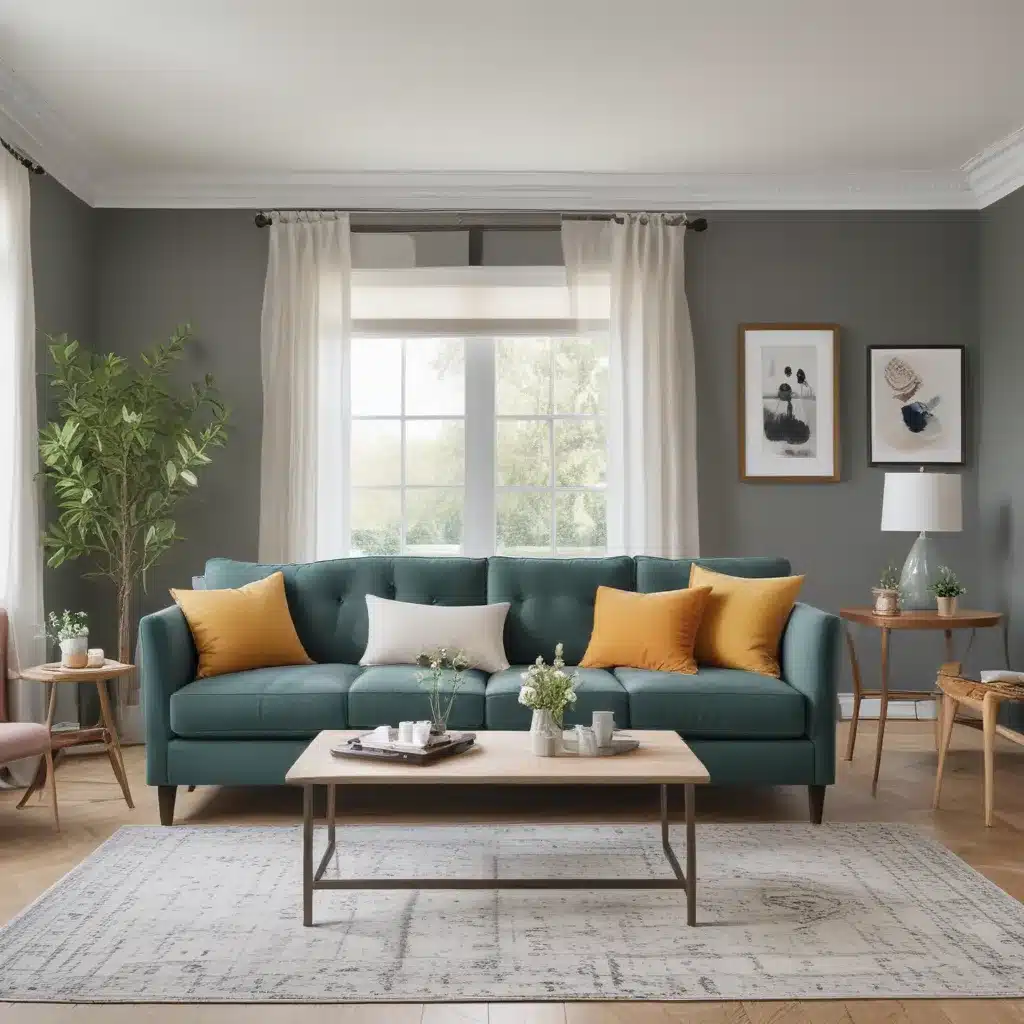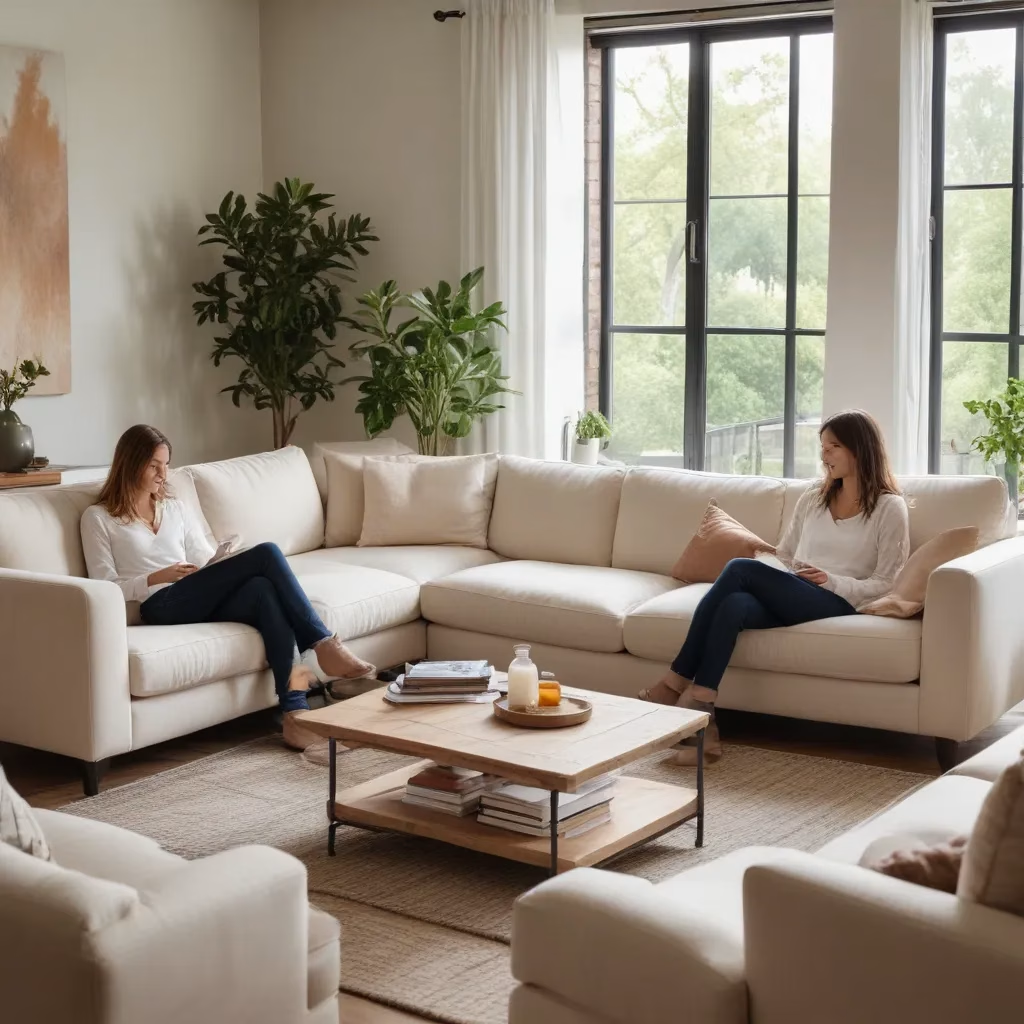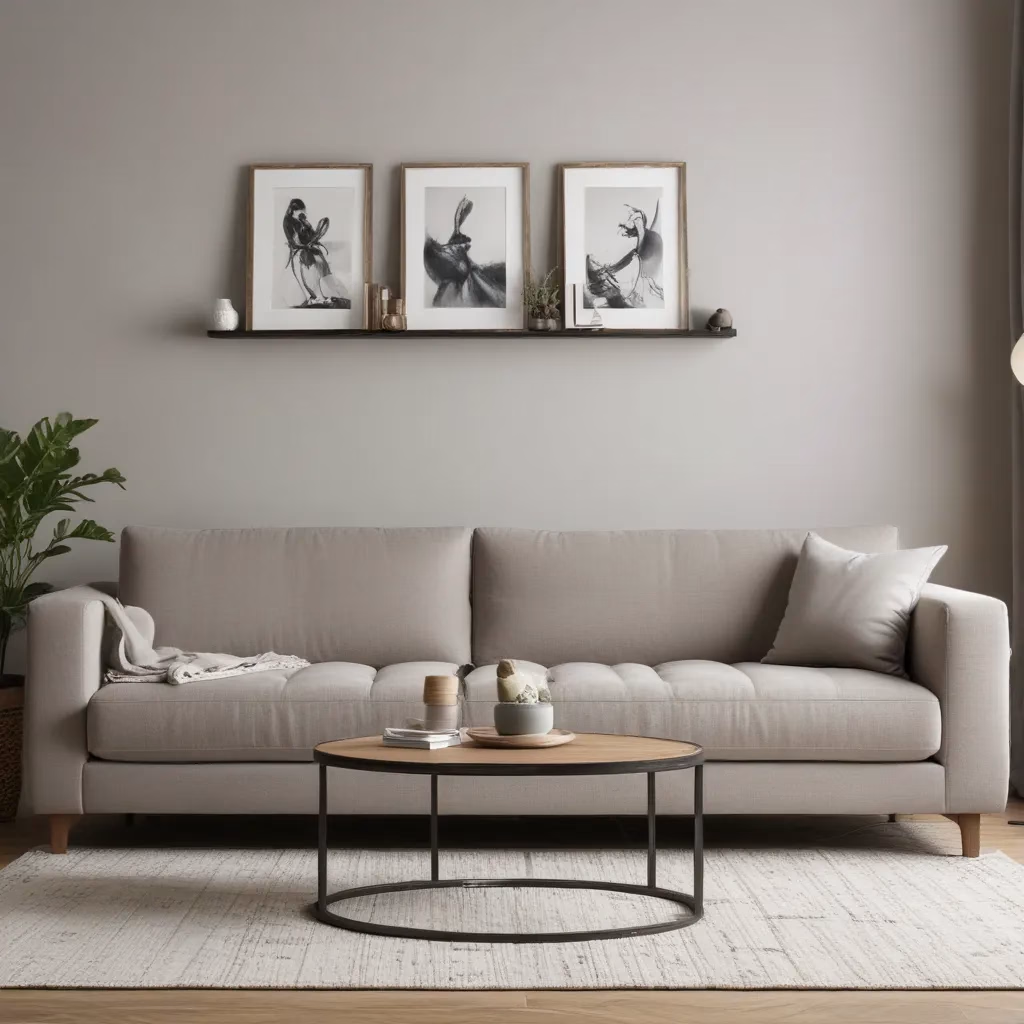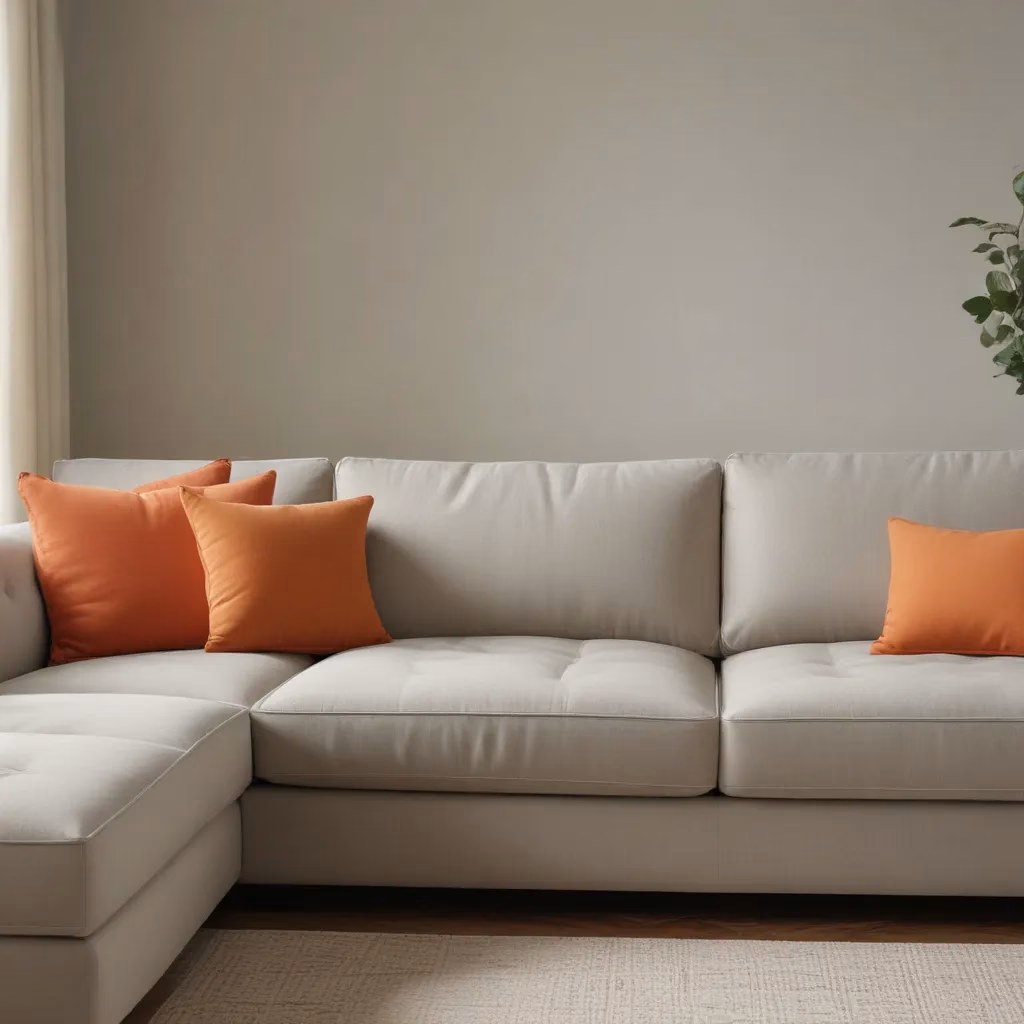Bring Your Open-Concept Dreams to Life
Growing up, my family home was a cramped maze of closed-off rooms – a dining room here, a living room there, with tiny windows that let in just a sliver of natural light. It felt constricting, like we were living in a series of tiny boxes rather than a warm, inviting space. That all changed when my parents knocked down the walls and embraced the open-concept trend.
Suddenly, our home transformed. The once-dark rooms flooded with sunshine, and the barriers that had divided us vanished. I could wander freely from the kitchen to the living area, chatting with my parents as they cooked, or sprawl out on the sofa to read while still feeling connected to the rest of the family. It was a revelation – open concept living gave us the freedom to live, work, and play in harmony.
Open-concept floor plans have only grown in popularity since then, and for good reason. These seamless, free-flowing spaces create an inviting atmosphere and make the most of limited square footage. But as Jessica Bennett, editor and former digital assistant home editor at Better Homes & Gardens, explains, they can also present unique decorating challenges.
“Open floor plans forego walls in favor of seamless spaces,” she notes. “This layout creates an inviting atmosphere and eases movement from room to room, but it can also present a few decorating challenges.”
Navigating those challenges is where a little creative flair comes in. With the right furniture arrangements, color schemes, and decor, you can transform your open-concept living room into a stylish, functional oasis. Let’s dive in and explore some stunning sofa ideas to make your open-concept dreams a reality.
Defining Zones with Strategic Sofa Placement
One of the trickiest aspects of open-concept living is maintaining a sense of separation between different areas – like the living room, dining room, and kitchen – without losing that airy, connected feel. The secret? Your sofa.
“A properly placed sofa can mark a transition from one space to the next in an open-concept living room,” advises Bennett. “For more impact, position a console table along the back to extend the sofa’s presence and boost storage.”
By strategically arranging your sofa, you can create distinct zones within your open-concept space. Grouping the sofa and chairs closely together, with the seats facing inward, can make a living room area feel cozier and more intimate, perfect for game nights and conversation.
Placing a console table behind the sofa takes things a step further, visually extending the living room’s boundaries and providing handy storage for essentials like extra blankets, TV remotes, and more. It’s a subtle yet effective way to carve out a dedicated lounge area without closing it off from the rest of the open floor plan.
Embracing Cohesive Color and Texture
When designing an open-concept living room, it’s important to remember that the entire area – including adjacent spaces like the kitchen and dining room – should be treated as one large, harmonious room. That means your color palette, wood finishes, and furniture styles don’t have to match exactly, but they should correlate for a seamless, aesthetically pleasing effect.
“Paint colors, wood finishes, and furniture styles don’t have to match exactly across spaces, but they should correlate for an aesthetically-pleasing effect,” explains Bennett. “In this great room, wood beams overhead and a neutral color palette create a smooth transition between the living room, kitchen, and beyond.”
Take inspiration from the kitchen’s color scheme and finishes when selecting your living room sofa. For example, you could choose a slipcovered sofa in a soft, grayish tone that echoes the streamlined appliances and stone countertops in the kitchen. Then, tie the two spaces together with an area rug and throw pillows that feature warm, earthy tones and black accents – a nod to the kitchen cabinets.
This cohesive, coordinated approach ensures your open-concept living area feels like a cohesive, intentional design, rather than a jumble of mismatched elements.
Leveraging Lighting to Define Zones
Thoughtful lighting is a game-changer when it comes to open-concept living. Strategic placement of eye-catching fixtures can help distinguish different areas within your expansive space, creating a sense of separation without sacrificing that airy, free-flowing feel.
“Hang eye-catching light fixtures to distinguish different areas in an open floor plan,” advises Bennett. “For continuity’s sake, choose similarly-styled fixtures that mirror a material, color, or finish used elsewhere in the great room.”
For example, you might use a dramatic drum-shaped pendant over the dining table to provide ambient lighting, while opting for sleek, minimalist pendant lights over the kitchen island to illuminate your workspace. The variation in silhouettes helps define the distinct zones, while the coordinating finishes keep the look cohesive.
Dimmable lighting is another invaluable tool in the open-concept arsenal. By adjusting the brightness, you can effortlessly shift the mood and atmosphere, transforming the space from a lively, entertaining hub to a cozy, intimate retreat as needed.
“Dimmable operation is also a great way of creating different zones,” explains Mara Rypacek Miller, managing director of Industville. “This allows you to adjust the brightness, creating different atmospheres in different spaces throughout the day.”
Carving Out Cozy Nooks
One of the potential pitfalls of open-concept living is that the vast, expansive space can sometimes feel impersonal or lacking in coziness. But with the right furniture arrangement and decor, you can easily carve out intimate, inviting nooks within your open-concept living room.
“Make an open-concept living room feel cozier and more intimate with strategic furniture placement,” suggests Bennett. “Group the sofa and chairs closely together with the seats facing each other to create the effect of a smaller, more inviting space that functions for game nights and conversing.”
Anchor these cozy conversation areas with plush area rugs and layer in textured throw pillows, soft blankets, and other tactile elements. The goal is to craft a space that feels warm, welcoming, and distinctly separate from the rest of the open floor plan – even if it’s just a few steps away.
You can further enhance the sense of intimacy by incorporating strategic lighting, such as a statement floor lamp or a pair of matching table lamps. These fixtures draw the eye inward, creating a cozy, cocoon-like atmosphere perfect for quiet moments of relaxation.
Blending Seamlessly with the Outdoors
One of the biggest advantages of open-concept living is the way it can blur the lines between indoor and outdoor spaces, creating a seamless flow of movement and light. By designing your living room to integrate effortlessly with an adjacent patio or backyard, you can amplify that sense of openness and expand your overall living area.
“Take things further by optimizing your open-plan living room to flow seamlessly out to an adjacent outdoor space,” suggests Ideal Home. “Consider wall-to-wall, floor-to-ceiling patio doors – they will extend your room and optimize light. Make the transition from inside to out seamless by color-matching internal flooring with external garden decking ideas.”
When choosing a sofa for this type of open-concept living room, opt for pieces that can withstand the elements, like outdoor-friendly fabrics or weatherproof wicker. Arrange the furniture to face the patio doors, creating a seamless sightline that draws the eye outward and blurs the boundaries between indoors and out.
Finish the look by selecting coordinating outdoor furnishings and accessories that echo the colors and textures of your indoor living room. This holistic, cohesive approach ensures your open-concept space feels like a harmonious, connected whole – no matter where the boundaries lie.
Making the Most of Unique Architectural Features
Not all open-concept living rooms are created equal. Some homes boast unique architectural elements, like high ceilings, slanted walls, or split-level floors, that present both challenges and opportunities when it comes to furniture placement and zoning.
“Not all home layouts are created equal,” notes Ideal Home. “If you don’t have a large flat space to explore open-plan living room ideas, then think outside the box. A few steps leading to the dining or kitchen space will allow the spaces to stay open and connected, even if on slightly different levels.”
These architectural quirks can actually work to your advantage, allowing you to get creative with your sofa placement and zoning strategies. For example, in a split-level open-concept layout, you could position your living room sofa on the lower level, creating a cozy, intimate seating area. Meanwhile, the elevated dining or kitchen space remains connected yet visually distinct.
Or, in a room with soaring ceilings, you might consider a sectional sofa that wraps around the perimeter, maximizing seating while preserving an open, airy feel. Pair it with a low-profile coffee table and pendant lighting that draws the eye upward, balancing the grand scale of the room.
The key is to embrace your home’s unique features, using them as springboards for innovative sofa and furniture arrangements that heighten the open, free-flowing nature of your space.
Bringing it All Together: A Cohesive, Stylish Open Concept
When it comes to crafting a cohesive, stylish open-concept living room, the devil is in the details. It’s not enough to simply plop down a sofa and call it a day – you need to thoughtfully consider how every element, from your color palette to your lighting fixtures, works together to create a seamless, intentional design.
“Cohesion is the glue that holds schemes together, and if you want to create an open plan living room space that works with the rest of the rooms, then it’s a key element to implement,” explains Ideal Home. “By choosing the same paint shade across the rooms for your living storage ideas, you’ll create this effect and it will do the trick perfectly.”
But paint is just the beginning. Look for ways to weave cohesive elements throughout your open-concept space, from matching hardware on your kitchen cabinets and living room built-ins to coordinating light fixtures that tie the whole look together.
“Hang eye-catching light fixtures to distinguish different areas in an open floor plan,” advises Bennett. “For continuity’s sake, choose similarly-styled fixtures that mirror a material, color, or finish used elsewhere in the great room.”
The result is a harmonious, visually captivating open-concept living room that seamlessly integrates with the surrounding spaces. It’s a look that’s not only aesthetically pleasing but also highly functional, allowing you to move freely between areas while maintaining a sense of cohesion and intentionality.
So, whether you’re starting from scratch with a new open-concept layout or looking to breathe new life into an existing space, keep these stylish sofa ideas and design principles in mind. With a little creativity and an eye for cohesion, you can transform your open-concept living room into a warm, inviting oasis that’s truly worthy of your Sofa Spectacular dreams.




